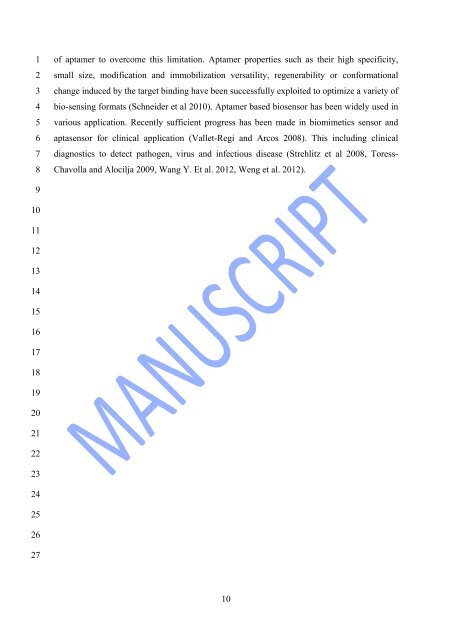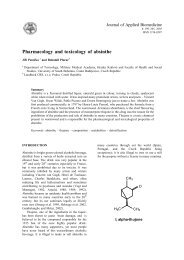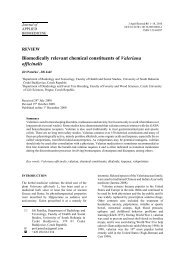Advances in biosensors: principle, architecture and applications
Advances in biosensors: principle, architecture and applications
Advances in biosensors: principle, architecture and applications
Create successful ePaper yourself
Turn your PDF publications into a flip-book with our unique Google optimized e-Paper software.
1<br />
2<br />
3<br />
4<br />
5<br />
6<br />
7<br />
8<br />
9<br />
10<br />
11<br />
12<br />
13<br />
14<br />
15<br />
16<br />
17<br />
18<br />
19<br />
20<br />
21<br />
22<br />
23<br />
24<br />
25<br />
26<br />
27<br />
of aptamer to overcome this limitation. Aptamer properties such as their high specificity,<br />
small size, modification <strong>and</strong> immobilization versatility, regenerability or conformational<br />
change <strong>in</strong>duced by the target b<strong>in</strong>d<strong>in</strong>g have been successfully exploited to optimize a variety of<br />
bio-sens<strong>in</strong>g formats (Schneider et al 2010). Aptamer based biosensor has been widely used <strong>in</strong><br />
various application. Recently sufficient progress has been made <strong>in</strong> biomimetics sensor <strong>and</strong><br />
aptasensor for cl<strong>in</strong>ical application (Vallet-Regi <strong>and</strong> Arcos 2008). This <strong>in</strong>clud<strong>in</strong>g cl<strong>in</strong>ical<br />
diagnostics to detect pathogen, virus <strong>and</strong> <strong>in</strong>fectious disease (Strehlitz et al 2008, Toress-<br />
Chavolla <strong>and</strong> Alocilja 2009, Wang Y. Et al. 2012, Weng et al. 2012).<br />
10





